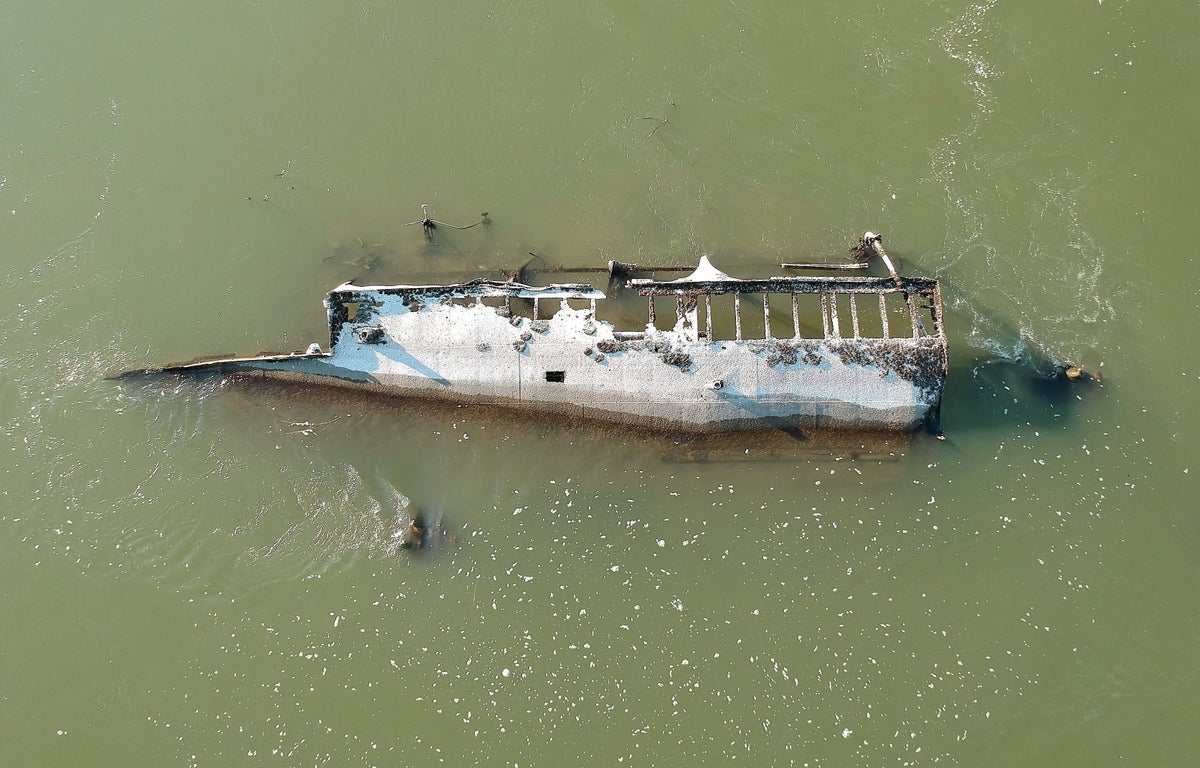
Europe’s worst drought in years on record has exposed the relics of World War II, including a graveyard of sunken German warships laden with explosives, after the mighty river Danube was pushed to its lowest levels.
The drought this year has parched the Serbian section of the Danube river, drying the water level of Europe’s second-longest river to the lowest in almost a century.
The river has exposed more than 20 hulks in Serbia’s river port town of Prahovo, raising alarm in the shipping industry as many of them are still loaded with unexploded ordnance and ammunition.
The vessels were part of a Nazi Black Sea fleet which had hundreds of scuttled warships across the river in 1944 and sank to the depths as they tried to retreat from advancing Soviet forces.
“The German flotilla has left behind a big ecological disaster that threatens us, people of Prahovo,” said Velimir Trajilovic, 74, a pensioner from Prahovo who wrote a book about the German ships.
More such relics are expected to poke out or be found lodged in the river’s sandbanks with unexploded explosives.
A transport minister in Serbia told local media that there could be around 10,000 explosive devices in the river.
The receding water and exposed warships also poses risk to workers in the local fishing industry, including those in Romania which lies just across the river.
It has happened as unrelenting droughts stretching into months and record-high temperatures have snarled river traffic on its vital arteries which run through Germany, Italy and France.
Even though the authorities have resorted to dredging to keep navigation lanes on the Danube open some of the hulks have narrowed the navigation sections in Prahovo, thinning it to just 100 metres (330 feet) from 180 metres.
Some of the World War II-era battleships, still boasting turrets, command bridges, broken masts and twisted hulls, are lying strewn across the riverbed while others are submerged under the sand banks.
Strewn across the riverbed, some of the ships still boast turrets, command bridges, broken masts and twisted hulls, while others lie mostly submerged under sand banks.
In March, the Serbian government issued a tender for the salvage of the hulks and removal of ammunition and explosives.
It is estimated that the work to remove more than 20 ships will cost 29mn euros ($30mn).
Additional reporting by agencies







